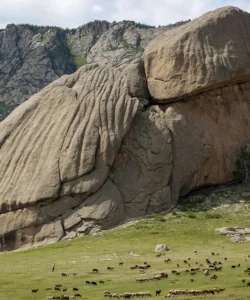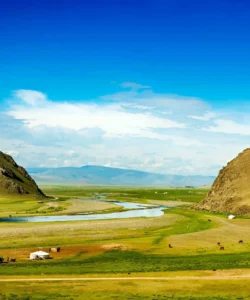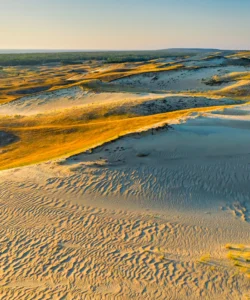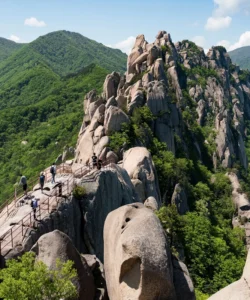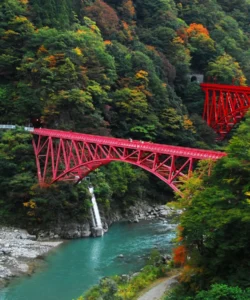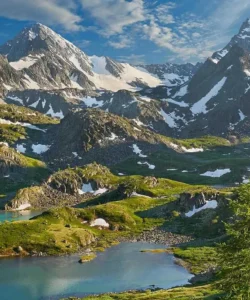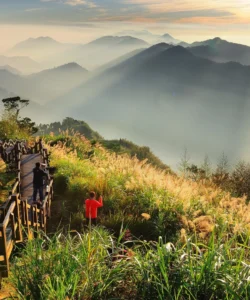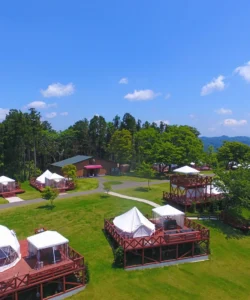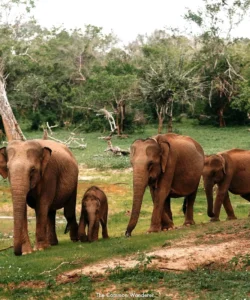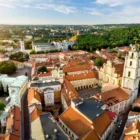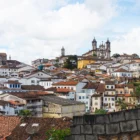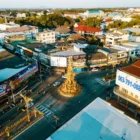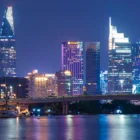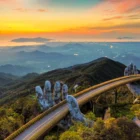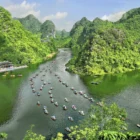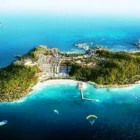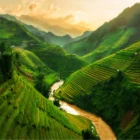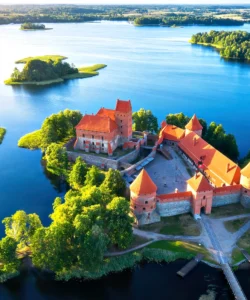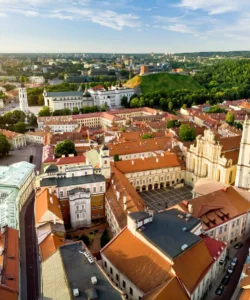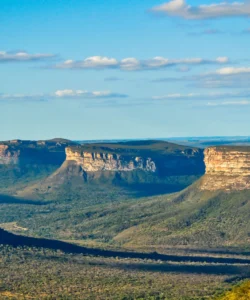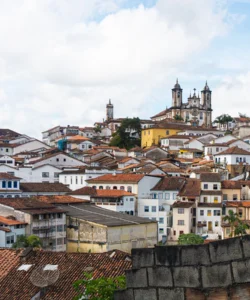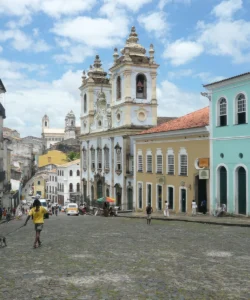Bwindi Impenetrable National Park, located in southwestern Uganda, is a primeval forest of immense ecological significance and a pivotal site for global conservation. Its name, “Impenetrable,” aptly describes its dense, ancient Afromontane rainforest, characterized by steep ridges, deep valleys, and a thick undergrowth that often requires a machete to navigate. A UNESCO World Heritage site, Bwindi is most famous for being home to nearly half of the world’s critically endangered mountain gorillas, offering an unparalleled opportunity for gorilla trekking – a truly life-changing wildlife encounter.
Name: Bwindi Impenetrable National Park
Address: Kanungu District, Southwestern Uganda. The park has four main gorilla trekking sectors: Buhoma (north), Ruhija (east), Rushaga (south), and Nkuringo (southwest). Park headquarters are in Buhoma.
How to get there:
Reaching Bwindi Impenetrable National Park , involves a significant international journey followed by domestic travel within Uganda (or Rwanda):
- From Entebbe (Uganda) to Bwindi:
- By Road: A long but scenic drive of approximately 8-10 hours from Kampala (Uganda’s capital) or Entebbe to the various Bwindi sectors. This typically requires a sturdy 4×4 safari vehicle. Some routes pass through Lake Mburo National Park or Queen Elizabeth National Park’s Ishasha sector (famous for tree-climbing lions) for optional stopovers.
- By Air: Daily domestic charter flights operate from Entebbe or Kajjansi Airfield (near Kampala) to airstrips closer to Bwindi.
- Fly to Kihihi airstrip (for Buhoma and Ruhija sectors): Approximately 1 hour 20 minutes flight, followed by a 1.5-hour drive to Buhoma.
- Fly to Kisoro airstrip (for Rushaga and Nkuringo sectors): Approximately 1 hour 50 minutes flight, followed by a 1.5-2.5 hour drive to the respective sectors.
- From Kigali (Rwanda) to Bwindi (Recommended for Southern Sectors):
- By Road: This is often the quicker route for accessing Bwindi’s southern sectors (Rushaga and Nkuringo). A drive from Kigali to the Uganda border, then to the southern sectors of Bwindi, can take as little as 4 hours (including border formalities), making it significantly faster than driving from Entebbe. You’ll need a cross-border transfer.
Best Time to Visit:
Bwindi Impenetrable National Park is open for gorilla trekking year-round. However, the best times to visit are during the drier seasons: June to August and December to February. During these months, forest trails are less slippery and muddy, making trekking conditions easier. While rain is possible any time in a rainforest, these periods offer a higher chance of sunny skies. The wetter seasons (March-May and October-November) can make trekking more challenging due to very muddy and slippery trails, but they also offer lush scenery, potentially easier gorilla sightings (as they may stay on lower slopes with abundant food), and sometimes discounted accommodation in the low season.
Landscape and Architecture:
Bwindi Impenetrable National Park’s “architecture” is its incredibly dense and ancient natural rainforest, largely untouched by human construction beyond essential infrastructure for tourism and conservation:
- Dense Afromontane Rainforest: The park’s defining characteristic is its incredibly dense, primeval Afromontane lowland forest, which extends into the montane forest belt. This “impenetrable” nature is due to its multi-layered canopy, thick undergrowth of ferns, vines, and bamboo, and numerous steep slopes and valleys.
- Albertine Rift Valley: Bwindi is located on the eastern edge of the Albertine Rift Valley, a biodiversity hotspot. Its varied habitats range from 1,160 meters (3,800 feet) to over 2,600 meters (8,500 feet) in altitude, supporting exceptional biodiversity.
- Ridges and Valleys: The terrain is rugged, characterized by steep slopes, narrow valleys, and numerous rivers and streams.
- No Roads Within the Park: While there are access roads to the various trekking sectors and trailheads, there are no roads inside the park’s core trekking areas. Exploration is done entirely on foot.
- Safari Tracks and Trails: Simple, often narrow, and unpaved tracks lead to the park entry points and designated starting points for gorilla trekking. Within the forest, the “trails” are often cut by rangers just before a trek, adapting to the gorillas’ movements, making them very organic and temporary.
- Park Headquarters and Briefing Points: Modest administrative buildings at each sector’s trailhead (e.g., Buhoma) serve as briefing points for trekkers.
- Community Settlements: Surrounding the park are communities, including the Batwa pygmy people, whose traditional huts and villages form a human “architecture” on the park’s fringes.
- Flora: Over 200 species of trees (including 10 endemics), 100 species of ferns, and a dense undergrowth.
- Fauna (The Main Attraction): Bwindi is renowned for its exceptional biodiversity, particularly:
- Mountain Gorillas (Gorilla beringei beringei): Home to almost half of the world’s remaining mountain gorilla population (over 500 individuals). Gorilla trekking involves tracking habituated gorilla families for an intimate encounter.
- Chimpanzees: Bwindi is unique as one of the few places where chimpanzees and mountain gorillas coexist in the same forest, highlighting its diverse primate population.
- Other Primates: L’Hoest’s monkeys, black-and-white colobus monkeys, blue monkeys, red-tailed monkeys, and golden monkeys.
- Forest Mammals: Forest elephants, buffalo, duikers (like the yellow-backed duiker), giant forest hogs, and various smaller mammals.
- Birds: Over 350 bird species, including 23 Albertine Rift endemics (making it a premier birding destination).
- Insects and Reptiles: Over 200 butterfly species (8 Albertine endemics) and a variety of reptiles and amphibians.
What makes it famous:
Bwindi Impenetrable National Park is famous for:
- Mountain Gorilla Trekking: This is its undisputed main draw. Bwindi offers the best chance globally for an intimate, guided encounter with critically endangered mountain gorillas in their natural habitat.
- Highest Mountain Gorilla Population: It shelters nearly half of the world’s remaining mountain gorillas, making it crucial for their survival.
- UNESCO World Heritage Site: Recognized for its exceptional biodiversity and unique ecological processes, as a Pleistocene refugium.
- Exceptional Biodiversity: Bwindi boasts unparalleled diversity in tree species, ferns, butterflies, and bird species within East Africa.
- Coexistence of Gorillas and Chimpanzees: It’s one of the rare habitats where both mountain gorillas and chimpanzees live in the same forest.
- Gorilla Habituation Experience: Bwindi is the only place in the world where visitors can participate in a “gorilla habituation experience,” spending more extended periods (up to four hours) with a gorilla family.
- Batwa Cultural Experience: Opportunities to engage with the Batwa pygmy people, who were the original inhabitants of the forest, learning about their traditional hunter-gatherer lifestyle and their relationship with the forest.
- Challenging and Rewarding Trekking: The rugged terrain and dense forest make trekking a physically demanding but incredibly rewarding adventure.
Differences from some other wonders:
Bwindi Impenetrable National Park stands out from other national parks and wilderness areas in several key ways:
- Mountain Gorilla Sanctuary: While other parks offer safaris, Bwindi’s primary and unique identity is as the world’s foremost sanctuary for mountain gorillas. The rigorous and highly controlled gorilla trekking permits and the intimate nature of the encounter set it apart from typical wildlife viewing experiences.
- “Impenetrable” Forest Ecosystem: Its incredibly dense, ancient Afromontane rainforest defines its unique ecosystem. This contrasts sharply with the open savannas of East African safari parks (e.g., Serengeti, Maasai Mara) or the dry zone jungles of Sri Lankan parks (e.g., Yala, Udawalawe). The trekking experience here is about navigating a thick, living forest.
- Foot-Based Primate Tracking: Unlike many wildlife parks where game drives are the norm, the core activity in Bwindi is foot-based tracking through challenging terrain, leading to a much more immersive and physically engaging wildlife experience.
- Role in Conservation of a Critically Endangered Species: Bwindi is at the forefront of mountain gorilla conservation efforts. Visitor permit fees directly contribute to the protection and habituation of these critically endangered primates, giving tourism a profound conservation purpose.
- Pleistocene Refugium: Geologically, it’s considered a “Pleistocene refugium,” meaning it served as a vital sanctuary for species during periods of climatic change, contributing to its exceptional biodiversity and making it an ancient “ark” of life.
- Cultural Connection (Batwa Pygmies): The opportunity to engage with the Batwa pygmy culture on the fringes of the forest adds a unique ethnological dimension to the wildlife experience, exploring the historical relationship between indigenous people and the forest.
In essence, Bwindi Impenetrable National Park is a profound and awe-inspiring wonder, a vital stronghold for a majestic and endangered species, offering an unparalleled journey into the heart of an ancient rainforest and a deeply moving encounter with one of humanity’s closest relatives.














